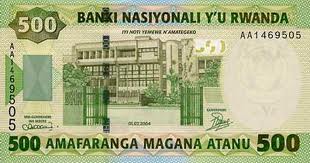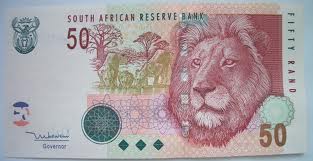Four Options to Send Money to Africa
When we send grant funds to our partners in Africa, we have the choice to send the money in either US Dollars or the country’s local currency. Exchanging money can be tricky, and sometimes even costly, so we look for the best way to send funds with minimal losses. There are four different scenarios that we can face when sending money to Africa. We’ve rated them from least to most costly: 1. Least Costly - Local currency sent to a local currency account
In most circumstances, this is the ideal way to send grant funds. There is a significant decrease in bank fees for both the sender and the receiver when money is transferred this way. Of our partners who received local currency into a local currency account last year, only 26% reported bank deductions on the transaction. This is the way we prefer to send funds, and the majority of our partners agree - 54.5% of them received payments this way last year.
2. Less Costly - US Dollars sent to a local currency account
We encourage our partners to have us transfer the funds in the same currency that their account is held in, but we will always send funds in US Dollars if they request it. Sometimes partners may feel that they will get a better exchange rate if the funds are sent in US Dollars. This can be true, but it’s definitely hit or miss. Here’s an example: We sent two payments to a partner on the same date, but one was exchanged by our bank and transferred in local currency, and the other was sent in USD and exchanged later by their bank. It just so happened that with the way the currency was fluctuating, the money exchanged at the later date had a more favorable exchange rate. This gave the impression that sending the funds in US Dollars was preferable, but the fluctuation could have just as easily worked out in the reverse. The occurrence of bank fees for these transactions is definitely higher. 45% of our partners reported bank deductions when receiving US Dollars into a local currency account last year. For this reason we encourage partners not to pick this option, but we respect their choice when they do.
3. More Costly - US Dollars sent to a US Dollars account
If a partner has a bank account that is held in US Dollars instead of local currency, we want to make sure we are only sending them funds in US Dollars (you’ll see why under option 4). There are a number of reasons why a partner may hold a USD account. In Zimbabwe, for example, all of our partners receive money into USD accounts after the Zimbabwean Dollar was abandoned in 2009. In other countries, organizations sometimes choose to hold a USD account because the local currency is unstable and they would risk facing exchange rate losses during the year if the funds were held in their local currency.
The downside is that the occurrence of bank fees is significantly higher for these groups, with 56% of grantees reporting bank deductions. However, for these groups the cost of bank fees is usually outweighed by other benefits. Last year 18% of our partners had us send US Dollars to their US Dollar account, the majority of which were in Zimbabwe.
4. Most Costly - Local currency sent to a US Dollars account
This is without a doubt the worst option of the four, and something we work hard to avoid. We are careful not to tell grantees that the best way to send money is in the country’s local currency, because if they have a USD account, then it’s just not true.
If we were to send local currency to a USD account, the money would first be exchanged by our bank into the local currency, then exchanged back into USD by the receiving bank, or worse an intermediary bank. The transaction is likely to involve an exchange rate loss during both exchanges as well as bank deductions from both the intermediary and the receiving bank. The result could be a loss of hundreds of dollars or more, depending on how much exchange rates were fluctuating at the time.
Good communication with our partners helps us to avoid making assumptions so that we don’t inadvertently send money this way. Fortunately, none of our partners last year were sent local currency to a USD account.
Here are some of the currencies we currently send funds in:






